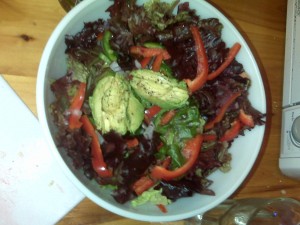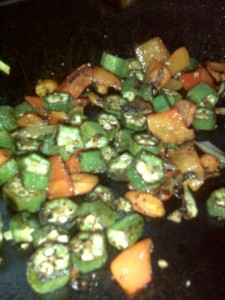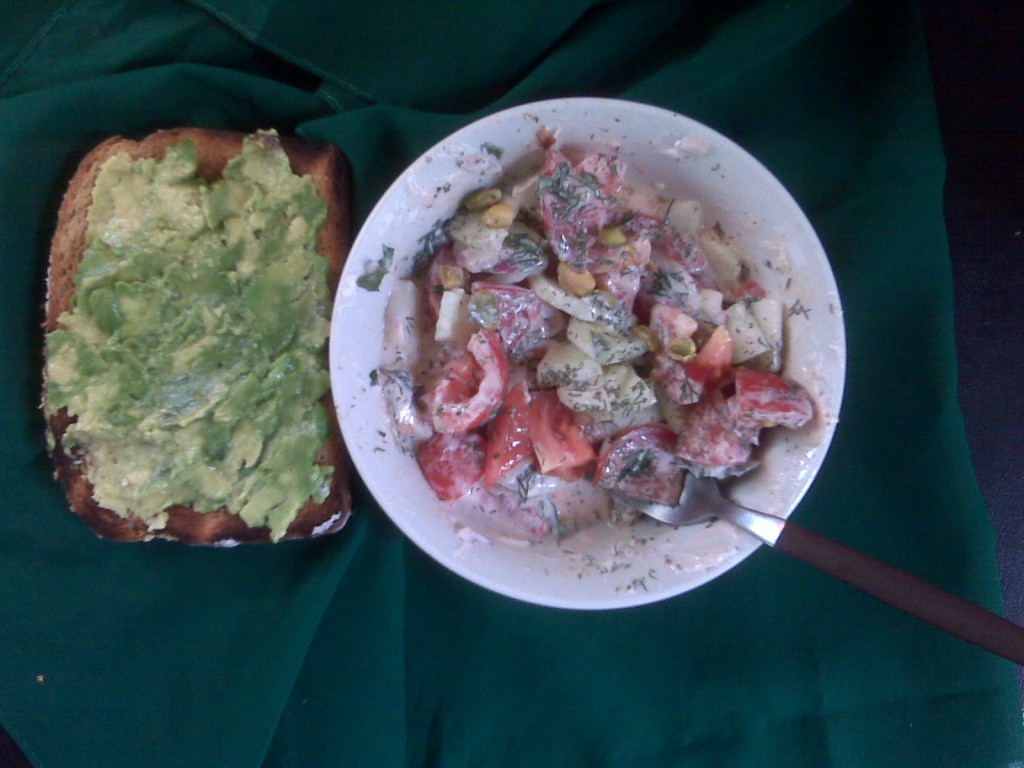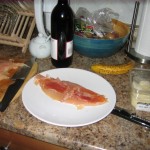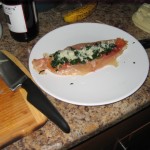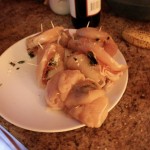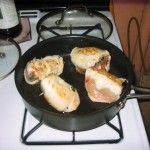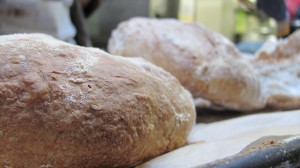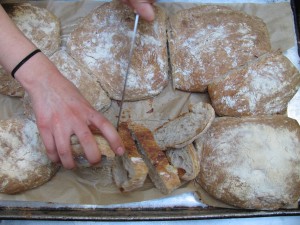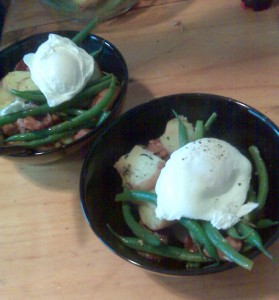by Anna Reeser
This dish is aesthetically pleasing in several ways. First, it is yellow, a color that drips over objects as late-afternoon sun, and tinges landscapes through warm sunglasses. Second, it is made up of entirely rounded foods. The eggplants, crookneck squash, and yams are luxuriantly smooth and curved. The cashews are miniature versions of the common shape. Third, it tastes mildly spicy and sweet, and can accompany other dishes or stand on its own. The concept of Yam Curry emerged during my spring break last year, when I was at my parent’s house in Ojai recovering from wisdom tooth extraction. Eventually, I could eat real food, provided it was very soft. My mother prepared a meal of several edible dishes: pureed broccoli with cheese, mashed potatoes, and a vegetable dish made with yams, eggplants and squash with a simple curry flavor and mustard seeds. It was delicious, and I even felt thankful for my temporary handicap because it inspired such a wonderful soft dish. When I returned to Berkeley, I started making versions of the Yam Curry. I added cilantro and cashews for a fresh, crunchy garnish. I put the curry in a tortilla with a yogurt and cucumber sauce, and finally developed the “Super-dank Indian Burrito”. This creation combines yam curry, pieces of chicken thighs stir-fried with tandoori seasoning, and yogurt cucumber sauce in a whole wheat tortilla. It’s a satisfying meal: full of flavor, fun to assemble, and pleasantly colorful.
Yam Curry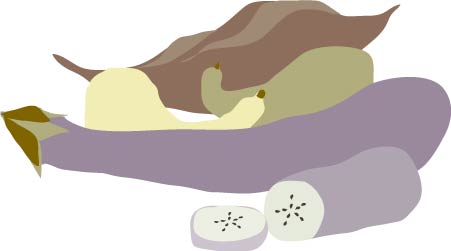
Ingredients:
1 large yam (Not a sweet potato. Yams are dark orange inside and dusty red outside. This is what you want.)
2-3 small crookneck yellow squashes 1-2 chinese eggplants (Long, bright purple, very thin skin)
2 tsp turmeric
1 tbsp Indian Curry Spice (I use a premade mixture, easy to find in most grocery stores)
1 tsp mustard seeds
salt & pepper to taste
olive oil
handful chopped cilantro
handful chopped toasted, salted cashews
Method:
Bake yam with skin until moderately soft (25-30 mins). Meanwhile, chop eggplants and squash into semicircles. In a large pot, heat a generous amount of olive oil. Add mustard seeds, curry spice, and turmeric. When the seeds sizzle, add the eggplant along with enough water to keep the eggplant soft. Add squash. Steam with the top on for 5 mins. When yam is softened and cooled, the skin should peel off easily. Chop the yam into semicircles and add to mixture. Stir occasionally, adding salt, pepper, and more curry or turmeric till it tastes good to you. Sprinkle with cilantro and cashews.
Yogurt Sauce
Ingredients:
at least 1/2 cup plain yogurt
cucumber
salt & pepper
paprika
cilantro
Method:
add a handful of peeled, finely chopped cucumber to a small bowl of plain yogurt. Add salt, pepper, chopped cilantro, and a dash of paprika makes it extra attractive.
Chicken
Ingredients:
2 boneless skinless chicken thighs
3 cloves garlic
juice of 1/2 a lemon
red tandoori seasoning (also a pre-made spice mixture but could also be improvised with cumin, cayenne, and paprika)
extra cayenne pepper
olive oil
Method:
Chop chicken and douse with lemon juice, salt, pepper and red tandoori seasoning. Heat olive oil in a cast iron pan and add chopped garlic. When they sizzle, add chicken and stir fry till browned. Add a dash of cayenne pepper for spicier chicken.
Super-dank Indian Burrito:
Combine Yam Curry, Yogurt Sauce, and Chicken in a warmed whole wheat (preferably Mi Abuelita Bonita) tortilla, and enjoy.
Yield: At least 2 burritos.
